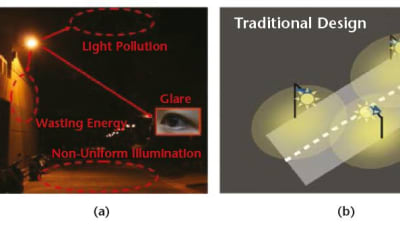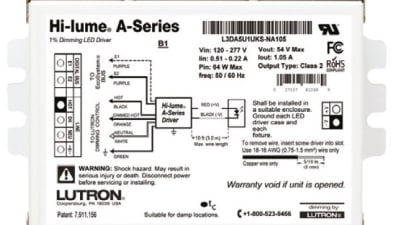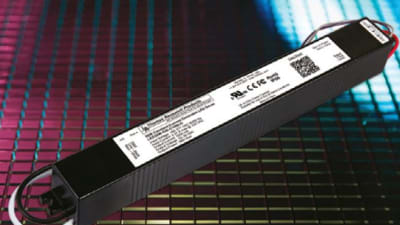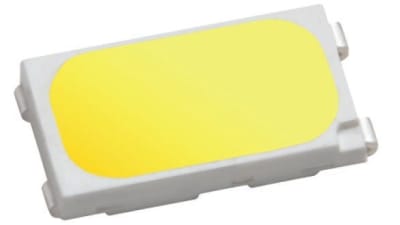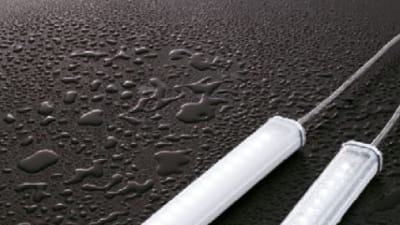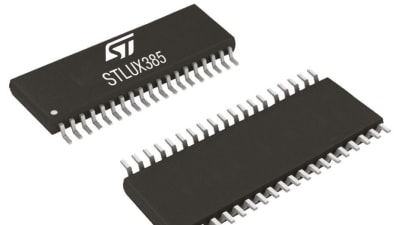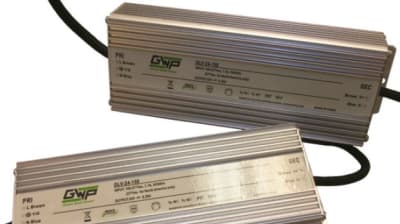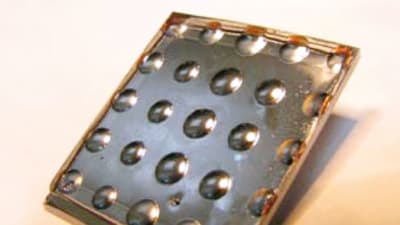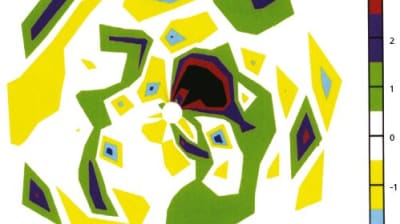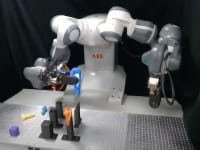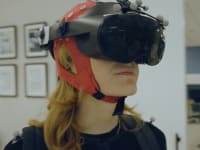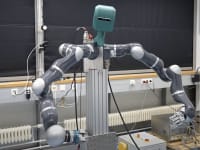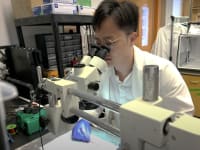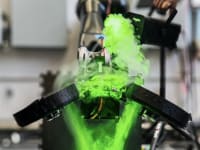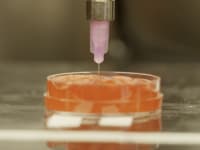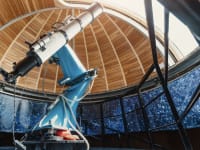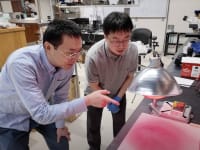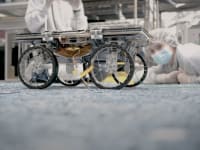Stories
61
0
12870
30
Application Briefs: Lighting
Libelium recently announced the availability of a new smart lighting solution for Smart Cities deployments based on the modular Waspmote Plug & Sense! wireless sensor network...
Application Briefs: Lighting
Streetlights illuminate the night, shining upon roadways and sidewalks across the world, but these ubiquitous elements of the urban environment are notoriously inefficient and major contributors...
Products: Lighting
Lutron Electronics (Cooper sburg, PA) is introducing a higher power LED driver that significantly expands the capabilities of its A-Series driver family. The new 50W Hi-lume® A-Series LED driver is designed for use...
Products: Lighting
Thomas Research Products (Huntley, IL) has introduced a line of 35W LED drivers that feature form factor matching T5 fluorescent ballasts. These 35W drivers are an expansion of TRP's standard LED series. Input voltage ranges...
Products: Lighting
Samsung Electronics Co., Ltd. (Seoul, Korea) has begun producing a new lineup of middlepower LED packages with 160lm/W light efficacy, for use in a wide variety of LED lighting applications including LED tubes, LED ambient...
Products: Lighting
Wilbrecht LEDCO (St. Paul, MN), has introduced new bipolar LEDs. The pre-wired assembly of a red, green or yellow bipolar LED and a resistor will work directly off a 120 VAC or 240 VAC line as a LED power indicator...
Products: Lighting
The LF2B series of LED lighting units from IDEC (Sunnyvale, CA) is available in a universal 100-240V AC input, making it suitable for use anywhere in the world. And the LF2B LUMIFA series does not produce a flicker-affect you...
Products: Lighting
ST Microelectronics (Geneva, Switzerland) has introduced the STLUX385 (Masterlux™ platform), the world’s first programmable digital controller specifically optimized for lighting and power-supply applications....
Products: Lighting
Power Integrations (San Jose, CA) recently introduced the RDR-347, an LED-downlight reference design. The new circuit demonstrates the capabilities of the recently launched LYTSwitch™ IC family, which offers...
Products: Lighting
Larson Electronics (Kemp, TX) has announced the release of a high power LED light bar designed to provide blue or white light output.
Products: Lighting
Alpha and Omega Semiconductor Limited (AOS) (Sunnyvale, CA) has released the AOZ1948, a single channel buck LED controller that features LED dimming resolution with full linearity from 100% to 1%. The device is able to...
Products: Lighting
Green Watt Power, a division of Calex Mfg. Co. (Concord, CA), recently introduced the GLV-24-150, a constant voltage LED power supply with a universal AC input range, 100 - 277 VAC. The GLV-24-150 has an...
Briefs: Physical Sciences
Dielectrophoresis-Based Particle Sensor Using Nanoelectrode Arrays
A method has been developed for concentrating, or partly separating, particles of a selected species from a liquid or gas containing these particles, and flowing in a channel. An example of this is to promote an accumulation (and thus concentration) of the selected particle (e.g.,...
News
Soft, Clothing-Like Exosuit for Walking Assistance
Exoskeletons often fail to allow the wearer to perform natural joint movements, and are also generally heavy, which causes fatigue. For applications where a person only needs partial gait assistance from a robot, researchers from Harvard University's Wyss Institute researchers are pursuing the use...
Briefs: Physical Sciences
In order to deliver crisp images in high-speed machine vision applications, image sensors require high-speed shuttering ability. The industry has traditionally relied on charge-coupled device (CCD) image sensors using...
Briefs: Software
ULTRA: Underwater Localization for Transit and Reconnaissance Autonomy
This software addresses the issue of underwater localization of unmanned vehicles and the inherent drift in their onboard sensors. The software gives a 2 to 3 factor of improvement over the state-of-the-art underwater localization algorithms.
Briefs: Physical Sciences
Multi-Dimensional Damage Detection for Surfaces and Structures
Current designs for inflatable or semirigidized structures for habitats and space applications use a multiple-layer construction, alternating thin layers with thicker, stronger layers, which produces a layered composite structure that is much better at resisting damage. Even though such...
Briefs: Physical Sciences
Autonomous Cryogenic Leak Detector for Improving Launch Site Operations
NASA, military, and commercial satellite users need launch services that are highly reliable, less complex, easier to test, and cost effective. This project has developed a tapered optical fiber sensor for detecting hydrogen. The invention involves incorporating chemical...
Briefs: Physical Sciences
Submillimeter Planetary Atmospheric Chemistry Exploration Sounder
A report describes the Submillimeter Planetary Atmospheric Chemistry Exploration Sounder (SPACES), a highsensitivity laboratory breadboard for a spectrometer targeted at orbital planetary atmospheric analysis. The frequency range is 520 to 590 GHz, with a target noise temperature...
Briefs: Manufacturing & Prototyping
A 5×5 silicon microlens array was developed using a silicon micromachining technique for a silicon-based THz antenna array. The feature of the silicon micromachining technique enables one...
Briefs: Manufacturing & Prototyping
Method for Reduction of Silver Biocide Plating on Metal Surfaces
Silver ions in aqueous solutions (0.05 to 1 ppm) are used for microbial control in water systems. The silver ions remain in solution when stored in plastic containers, but the concentration rapidly decreases to non-biocidal levels when stored in metal containers. The silver deposits...
Briefs: Electronics & Computers
Forward-Looking IED Detector Ground Penetrating Radar
There have been many developments of mine or metal detectors based on ground penetrating radar techniques, usually in handheld or rover-mounted devices. In most mine or metal detector applications, conditions are in a stationary mode and detection speed is not an important factor.
Briefs: Electronics & Computers
Battery Charge Equalizer with Transformer Array
High-power batteries generally consist of a series connection of many cells or cell banks. In order to maintain high performance over battery life, it is desirable to keep the state of charge of all the cell banks equal. A method provides individual charging for battery cells in a large, high-voltage...
Briefs: Electronics & Computers
An Efficient, Highly Flexible Multi-Channel Digital Downconverter Architecture
In this innovation, a digital downconverter has been created that produces a large (16 or greater) number of output channels of smaller bandwidths. Additionally, this design has the flexibility to tune each channel independently to anywhere in the input bandwidth to...
Briefs: Electronics & Computers
Fully Printed, Flexible, Phased Array Antenna for Lunar Surface Communication
NASA’s future exploration missions focus on the manned exploration of the Moon, Mars, and beyond, which will rely heavily on the development of a reliable communications infrastructure from planetary surface-to-surface, surface-to-orbit, and back to Earth. Flexible...
Briefs: Electronics & Computers
Dimmable Electronic Ballast for a Gas Discharge Lamp
Titanium dioxide (TiO2) is the most efficient photocatalyst for organic oxidative degradation. TiO2 is effective not only in aqueous solution, but also in nonaqueous solvents and in the gas phase. It is photostable, biologically and chemically inert, and non-toxic. Low-energy UV light...
Briefs: Materials
Differential Muon Tomography to Continuously Monitor Changes in the Composition of Subsurface Fluids
Muon tomography has been used to seek hidden chambers in Egyptian pyramids and image subsurface features in volcanoes. It seemed likely that it...
Briefs: Materials
Conductive Carbon Nanotube Inks for Use with Desktop Inkjet Printing Technology
Inkjet printing is a common commercial process. In addition to the familiar use in printing documents from computers, it is also used in some industrial applications. For example, wire manufacturers are required by law to print the wire type, gauge, and safety...
Briefs: Materials
Enhanced Schapery Theory Software Development for Modeling Failure of Fiber-Reinforced Laminates
Progressive damage and failure analysis (PDFA) tools are needed to predict the nonlinear response of advanced fiber-reinforced composite structures. Predictive tools should incorporate the underlying physics of the damage and failure mechanisms observed...
Top Stories
Blog: Manufacturing & Prototyping
2025 Holiday Gift Guide for Engineers: Tech, Tools, and Gadgets
Blog: Power
Using Street Lamps as EV Chargers
INSIDER: Semiconductors & ICs
Scientists Create Superconducting Semiconductor Material
Blog: Materials
This Paint Can Cool Buildings Without Energy Input
Blog: Software
Quiz: Power
Webcasts
 Upcoming Webinars: AR/AI
Upcoming Webinars: AR/AI
The Real Impact of AR and AI in the Industrial Equipment Industry
 Upcoming Webinars: Motion Control
Upcoming Webinars: Motion Control
Next-Generation Linear and Rotary Stages: When Ultra Precision...
 Podcasts: Manufacturing & Prototyping
Podcasts: Manufacturing & Prototyping
SAE Automotive Engineering Podcast: Additive Manufacturing
 Podcasts: Defense
Podcasts: Defense
A New Approach to Manufacturing Machine Connectivity for the Air Force
 On-Demand Webinars: Manufacturing & Prototyping
On-Demand Webinars: Manufacturing & Prototyping
Streamlining Manufacturing with Integrated Digital Planning and Simulation



